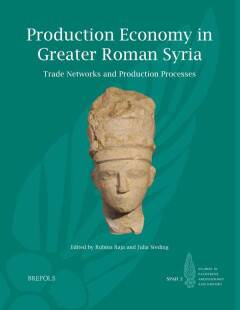
- Afhalen na 1 uur in een winkel met voorraad
- Gratis thuislevering in België vanaf € 30
- Ruim aanbod met 7 miljoen producten
- Afhalen na 1 uur in een winkel met voorraad
- Gratis thuislevering in België vanaf € 30
- Ruim aanbod met 7 miljoen producten
Zoeken
Production Economy in Greater Roman Syria
Trade Networks and Production Processes
Rubina Raja
Paperback | Engels
€ 90,10
+ 180 punten
Omschrijving
The site of Palmyra, an oasis city in the Syrian desert located at a cultural and geographical crossroads, was a major trading centre in the first three centuries ad. This volume offers an in-depth exploration into one type of trade and its economy, namely that of stone, and the crucial role that this played within the settlement. The papers gathered here explore different aspects of stone, from its use in Palmyra's famous funerary portraiture, the production techniques that underlay these works, and their polychromy, through to where and how marble and limestone were provenanced, quarried, and transported, and what this implies for our understanding of the organization of the stone trade in both Syria and beyond. Chapters on Aphrodisian artists and the rock-cut chambers in Commagene and Cyrrhestice ensure the evidence from Palmyra is set in a wider context, enabling comparisons to be drawn with the work of sculptors elsewhere. Together, the papers within this volume offer a unique insight into a trade and economy of vital importance in an important urban centre of the Roman period. The work presented here is an outcome of the Palmyra Portrait Project, directed by Prof. Rubina Raja.
Specificaties
Betrokkenen
- Auteur(s):
- Uitgeverij:
Inhoud
- Aantal bladzijden:
- 232
- Taal:
- Engels
Eigenschappen
- Productcode (EAN):
- 9782503591254
- Verschijningsdatum:
- 13/05/2021
- Uitvoering:
- Paperback
- Formaat:
- Trade paperback (VS)
- Afmetingen:
- 216 mm x 279 mm
- Gewicht:
- 916 g

Alleen bij Standaard Boekhandel
+ 180 punten op je klantenkaart van Standaard Boekhandel
Beoordelingen
We publiceren alleen reviews die voldoen aan de voorwaarden voor reviews. Bekijk onze voorwaarden voor reviews.








